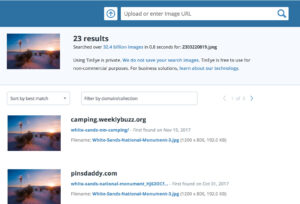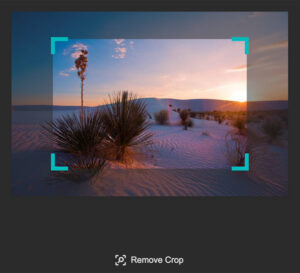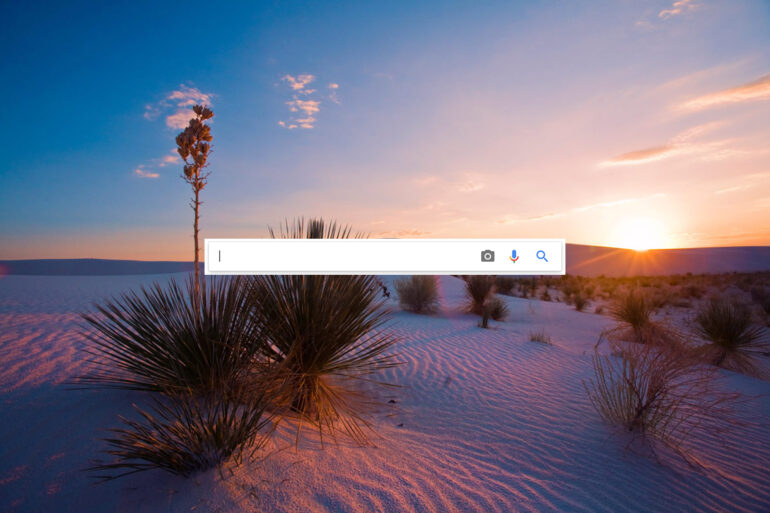We may earn a commission when you purchase through affiliate links. Learn more.
How many images are on the internet? It’s impossible to say for sure: by 2010, Google had indexed more than ten billion images. Nearly ten years later, it’s anyone’s guess just how many photos are floating around on the web; certainly many billions, probably hundreds of billions, with millions of new additions every day.
Search engines like Google and Bing use programs known as spiders, crawlers, and robots to scour the internet searching for publicly available content to index, including images. Using a complex set of algorithms, reverse image search engines like Google, Bing, TinEye, Yandex, and Baidu identify a photos unique features like colors, points, lines, and textures and attempt to find other images in their index that are visually similar.
Why Use a Reverse Image Search?
• To see where on the internet the photo is being used and find unauthorized usage
As a photographer and content creator, this is my number one reason for using reverse image search. I like to be aware of where my images are being used online. Reverse image searching helps me to identify websites and individuals who are using my photography without my permission or outside the scope of any permitted licensing agreements.
• To find the original source of the photo
If you’ve come across a photo posted online without any attribution, using reverse image search is a good way to try and track down the original source.
• To find out more information about the photo
When you find a photo that has no context, using reverse image search is a great way to find other webpages which include the image and may provide more information about it. As a travel photographer, I’ll often encounter a photo of a place that looks beautiful posted on Facebook or Reddit without any additional information – I might use a reverse image search to try to find out more about that
• To locate high resolution copies of the image
If you’ve found a photo you really like and want to use, but the copy you’ve found is too small, reverse image search might be able to help you locate a high resolution version. Be sure to verify that you can legally use the image in your project – just because you’ve found an image online doesn’t mean it’s up for grabs. If you’re looking for images to use in a project with no strings attached, try searching on Unsplash.
• To find modified versions of the image
While reverse image searching is great for finding identical copies of an image in different sizes, it can also often identify images that have been modified from the original, but still contain enough identifying attributes to link them together. For instance, I still want to know if my images are being used even if someone has added a quote on top of it or modified the colors.

Using Reverse Image Search
Not all reverse image search engines are created equal. My personal favorites are Google Image Search and TinEye, but if you’re trying to perform a comprehensive reverse image search to locate as many other copies of an image as possible, it’s a good idea to try all of the reverse image search engines to increase your pool of results.
Because of the vastness of the internet, it’s unlikely that most reverse image searches will turn up every instance that an image is used – some may not turn up any results at all. Reverse image searching technology is a continually advancing field and the proprietary algorithms used by the search engines continues to improve as does the size of their image indexes, providing a greater volume of images to search through with more potential matches.
Let’s take a look at the major players in reverse image searching:
Google Image Search
With such a long history and a large index, it’s no surprise that Google’s Image Search technology works very well. To perform an image search, users can upload an image by browsing their drive, dragging and dropping into the search field, or pasting the URL of the image. Google has a massive index of photographs, so their reverse image search is able to return very accurate results for many searches. Additionally, their “Visually Similar Images” results are often strikingly accurate and able to display other images from the same location in many cases.
 If you use Google’s Chrome browser, you can perform a reverse image search just by right clicking on the photo and selecting “Search Google for Photo” from the pop-up menu. This functionality is also available on Firefox with a plugin.
If you use Google’s Chrome browser, you can perform a reverse image search just by right clicking on the photo and selecting “Search Google for Photo” from the pop-up menu. This functionality is also available on Firefox with a plugin.
TinEye
 TinEye has one of my favorite reverse image search setups – it’s easy to use: just drag and drop an image, upload it from your drive, or paste the URL into the search field. TinEye is a company that specializes in image search and recognition, so this sort of thing is their bread and butter. With an index of more than 32 billion images from around the web, TinEye delivers some of the most accurate results and along with Google is always one of my main go-to sites for reverse image searches.
TinEye has one of my favorite reverse image search setups – it’s easy to use: just drag and drop an image, upload it from your drive, or paste the URL into the search field. TinEye is a company that specializes in image search and recognition, so this sort of thing is their bread and butter. With an index of more than 32 billion images from around the web, TinEye delivers some of the most accurate results and along with Google is always one of my main go-to sites for reverse image searches.
Bing Image Search
 While Bing has never managed to really take on Google’s massive search engine market share, their reverse image search works pretty well and has some innovative features that are worth checking out. Like Google, you can search for an image by dragging and dropping, uploading the image from your drive, or by pasting the URL of the photo. You can also take a photo using your device’s camera. Their visual search for finding similar images is pretty interesting – you can select an area from the source image to use for identifying similar photos; useful if your source image includes text overlays you’d like to ignore.
While Bing has never managed to really take on Google’s massive search engine market share, their reverse image search works pretty well and has some innovative features that are worth checking out. Like Google, you can search for an image by dragging and dropping, uploading the image from your drive, or by pasting the URL of the photo. You can also take a photo using your device’s camera. Their visual search for finding similar images is pretty interesting – you can select an area from the source image to use for identifying similar photos; useful if your source image includes text overlays you’d like to ignore.
Bing’s image index seems to be smaller than Google’s, but the results for identical matches are presented in an efficient list format.
Yandex Image Search
Yandex may be unfamiliar to most readers, but they’re a large Russian search engine. Their reverse image search is easy to use: simply upload an image or paste a URL in to perform the image search. The results tend to be more limited than those from Google, Bing, and TinEye, but Yandex reverse image search does sometimes find unique instances of image usage that the others don’t.
Baidu Image Search
Baidu is a major Chinese search engine and their reverse image search can sometimes be useful. You’ll need to turn translation on in order to read most of what’s on the site, since it is in Chinese. I find that Baidu’s reverse image search doesn’t find as many results and the results that it does find tend to be on more popular websites – obscure usages of an image on small blogs and websites may not show up since the Baidu index likely doesn’t include them yet. Still, if you’re trying to be thorough it’s worth running a Baidu image search as well.
What to Do if you Find Someone Using your Images
Most of the time when I perform reverse image searches and find my images being used it’s either what I would consider acceptable usage like people re-sharing an image I originally shared on social media platforms like Tumblr or non-commercial usage on personal blogs. Once in a while though, you might encounter websites and companies using your images commercially or even other photographers claiming them as your own.
Remember that part about spiders and crawlers indexing all of the content on the internet? It’s not just search engines like Google and Bing who index content: content thieves use automated programs to crawl the web, copying articles and photos from their original sources onto new websites plastered with ads and designed to pull in page views to harvest some quick money before the web-hosting providers get enough complaints and remove the sites from their servers.
In the United States and in many other countries, photographers own the copyright to their image as soon as it’s created. Registering your images with the US Copyright Office offers additional protection and enables you to potentially collect statutory damages should you pursue a case against an infringing party. Service platforms like Pixsy utilize reverse image search technology to combat image theft, pairing usage monitoring with the ability to pursue legal action when image theft is discovered.
If you’ve found your photography being used without your permission online and simply want it removed, you can begin by sending the website or their host a DMCA takedown notice, informing them of the infringement and their responsibility to promptly remove the content.
Did you love these reverse image search tips? Share them on Pinterest!


